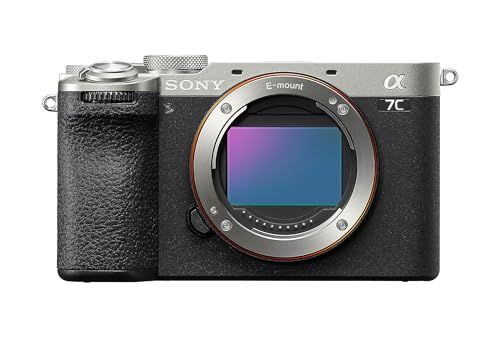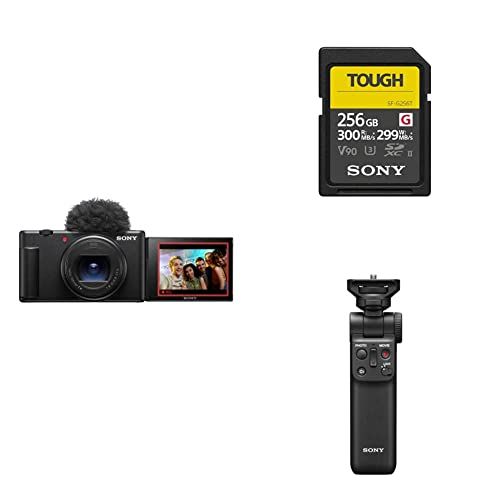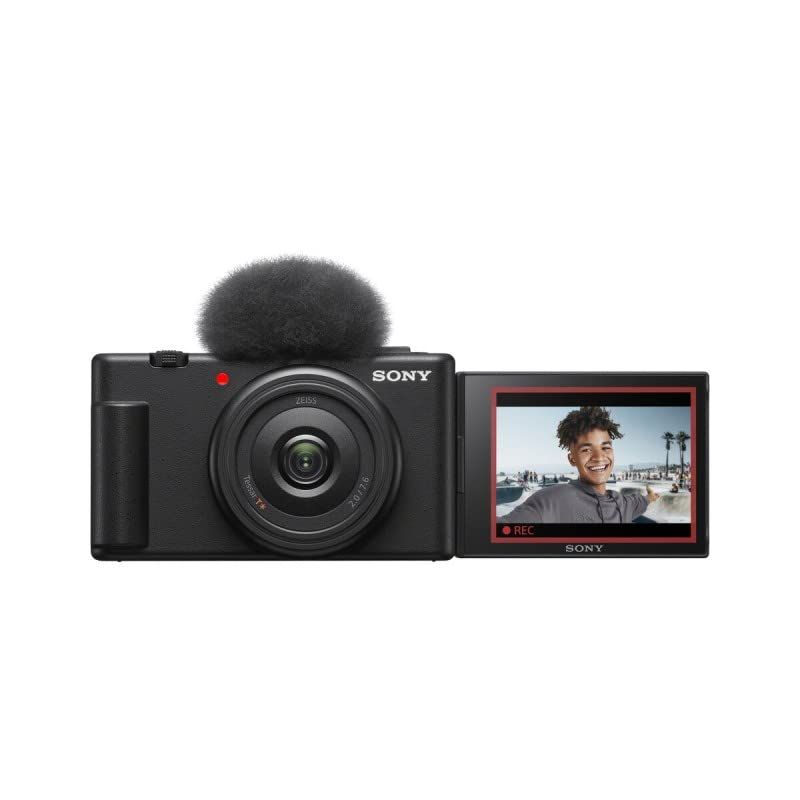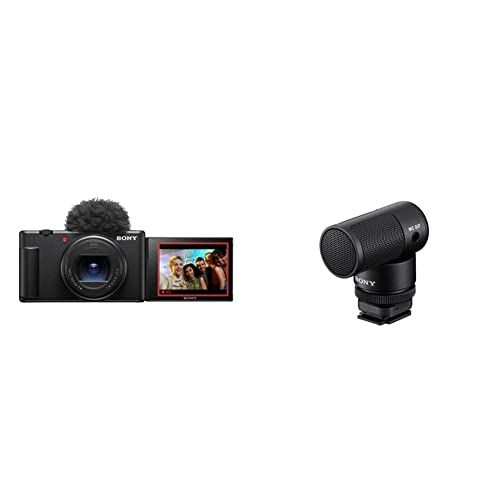Categories

Sony is one of the world's leading camera brands, offering a wide range of options for all types of photographers. Their lineup includes everything from beginner-friendly point-and-shoot cameras to advanced full-frame mirrorless and DSLR models.
Over the years, Sony has built a reputation for innovation and high-quality imaging. They were one of the first to embrace mirrorless camera technology, helping to popularize compact interchangeable lens cameras. More recently, Sony has focused on expanding their full-frame mirrorless system with the Alpha series.
For enthusiasts and professionals, Sony offers pro-level DSLRs like the A-mount SLT line. But their mirrorless E-mount cameras are where the most exciting advancements are happening. Models like the A7R and A9 series bring together impressive resolution, fast shooting, and 4K video recording.
With a diverse range of cameras and lenses, Sony has options for casual family photographers, travel shooters, aspiring filmmakers, and working professionals. Their constant innovation has helped them become one of the most respected brands for image quality and performance.
DSLR Cameras
Sony produces two main lines of DSLR cameras - the A7 series and the A9 series.
The A7 series are full-frame mirrorless cameras aimed at enthusiasts and professionals. Some of the latest models include:
A7R IV - Sony's highest resolution full-frame camera at 61MP. It excels at landscape, architecture, and studio photography.
A7R III - A 42MP full-frame model with 10fps burst shooting and advanced autofocus capabilities. A top choice for portraits, weddings, sports, and action.
A7 III - A versatile 24MP full-frame model with advanced video features. An outstanding value for both photos and videos.
The A9 series are Sony's top-of-the-line full frame mirrorless cameras built for speed:
A9 II - Sony's flagship 24MP sports photography camera with blackout-free 20fps burst shooting and 693 autofocus points.
A9 - The original A9 released in 2017 with 24MP resolution and 20fps burst. Still competitive but now superseded by the A9 II.
Both the A7 and A9 series feature 5-axis in-body image stabilization, weather sealing, and extensive connectivity options. They represent the cutting edge of mirrorless camera technology.
Mirrorless Cameras
Sony has become a leader in mirrorless camera technology and offers several popular options. The A6000 series, including the A6300, A6400, and A6500, is a great choice for enthusiasts looking for a lightweight and compact alternative to a DSLR. These cameras have APS-C sized sensors that deliver excellent image quality.
The A6000 series cameras boast fast autofocus, with up to 425 phase-detection AF points covering 84% of the image area. This allows for quick and accurate focusing on subjects. They can shoot at up to 11 frames per second in continuous shooting mode.
The A6300 and A6500 add in-body 5-axis image stabilization, which helps reduce blur from camera shake when shooting handheld, especially at slower shutter speeds. This is a feature not typically found in cameras of this size and price point.
These mirrorless cameras can record high-quality 4K video, making them versatile for both still photos and video. They have mic inputs for improved audio quality and can be charged via USB while shooting.
Overall, Sony's A6000 series offers an impressive combination of image quality, autofocus performance, and portability that makes them excellent choices as an affordable mirrorless camera option.
Compact Cameras
Sony's compact cameras, particularly the RX100 series, are some of the most advanced point-and-shoot cameras available. The RX100 series packs large 1-inch sensors into compact metal bodies, delivering image quality that rivals DSLRs in a highly portable form factor.
Key features of the RX100 series include:
Large 1-inch Exmor CMOS sensors, larger than typical point-and-shoot cameras. This allows for exceptional image quality, especially in low light.
Fast, high-quality Carl Zeiss Vario-Sonnar lenses with bright f/1.8-2.8 apertures. The lenses produce sharp, crisp images edge-to-edge.
Sophisticated BIONZ X image processors, which enable advanced capabilities like continuous shooting up to 24 fps, UHD 4K video, and super slow motion up to 960 fps.
180-degree tiltable LCD screens that allow for flexible shooting angles. Useful for selfies and overhead shots.
Large maximum apertures throughout the zoom range, which provide artistic background defocus effects not typically possible with smaller-sensor cameras.
Extensive manual controls and RAW shooting capabilities, providing DSLR-levels of creative control in a compact form.
The RX100 series delivers professional-level image quality, speed, features and creative control in a highly portable package. For those seeking top-tier point-and-shoot performance, the RX100 line represents an excellent option from Sony.
Lenses
Sony produces lenses optimized for its different camera systems. Two of the main lens mounts to know about are:
E-mount - Used on Sony's mirrorless cameras. E-mount lenses are designed specifically for mirrorless camera bodies. The short flange focal distance of E-mount allows for compact and lightweight lens designs. There are various types of E-mount lenses including wide-angle, telephoto, macro, and more.
FE lenses - These are full-frame E-mount lenses designed for Sony's full frame mirrorless cameras like the A7 series. FE lenses take full advantage of the large sensor in these cameras. The FE lens lineup includes premium options like G Master lenses which offer outstanding sharpness and bokeh. FE lenses can also be used on Sony's APS-C E-mount cameras, though the image will be cropped.
Sony has continued to grow its native E-mount lens lineup over the years. This gives Sony mirrorless users many options from ultra wide angle to super telephoto. Having lenses specifically designed for mirrorless results in performance optimized for Sony's mirrorless cameras.
Image Quality
Sony is well-known for having excellent image quality across its camera lineup. This is thanks to a combination of advanced sensor technology and sophisticated image processing capabilities.
Many of Sony's cameras feature Exmor sensors, which are backside illuminated CMOS sensors that allow more light to reach the sensor for improved low light performance. The latest Exmor R sensors also have an integrated AD converter which enables fast data readout.
Sony's BIONZ image processors also play a key role in delivering stunning images. These proprietary processors can handle massive amounts of data from high resolution sensors and reduce noise in images. The latest BIONZ X processor delivers high speed shooting capabilities and advanced noise reduction even at high ISO settings.
Together, these sensor and processing technologies allow Sony cameras to capture images with incredible dynamic range, vivid colors, and minimal noise even in low light shooting conditions. Photographers can achieve clean, detailed images across a wide sensitivity range.
Video Capabilities
Sony cameras are known for their impressive video capabilities. Many of their newer models can shoot high-quality 4K video, allowing for incredibly detailed footage.
For example, their top-of-the-line full frame mirrorless cameras like the a7S III and a1 can record 4K video at up to 120fps, providing smooth slow motion when played back. Some can even record 4K video at 60fps with no crop, using the full width of the sensor.
Sony cameras also have advanced image stabilization features to reduce shakiness when shooting handheld video. Their sensor-shift stabilization effectively counteracts camera shake by moving the sensor itself to stabilize the image. This SteadyShot technology results in impressively stable video, even when shooting at long focal lengths or while walking.
In addition, many of their cameras have impressive autofocus capabilities that work well for video recording. Real-time tracking can keep a moving subject in focus automatically. Eye AF also detects and focuses on human or animal eyes with incredible accuracy. This allows shooters to get tack-sharp focus on subjects even when recording video.
Overall, Sony cameras stand out with their ability to capture professional-quality 4K video, slow motion, and stabilized footage straight out of the camera. This makes them a top choice for videographers and content creators.
Autofocus
Sony is well known for having some of the most advanced autofocus systems in their cameras, with features like fast and accurate phase detection AF and Eye AF for photographing people.
Phase Detection AF
Many of Sony's mirrorless cameras use on-sensor phase detection AF points, which allows for lightning fast autofocus speeds and tracking of moving subjects. Phase detection AF is able to directly determine the direction and amount a lens needs to be adjusted to bring the subject into focus, without any back-and-forth hunting. This makes Sony cameras excellent choices for sports, wildlife, and other action photography.
Eye AF
One of Sony's most impressive autofocus capabilities is Eye AF, which can automatically detect and focus on a person's eyes in both photos and videos. This makes getting tack-sharp portraits much easier, as eyes are typically the most important part of a person to keep in focus. Photographing groups of people is also easier with Eye AF, as you can ensure everyone's eyes are precisely focused without having to manually select focus points. Sony continues to improve Eye AF with enhancements like real-time tracking and support for animal eye detection.
Connectivity
Sony cameras offer excellent connectivity options to make transferring photos and videos easy. Many models include built-in WiFi, allowing you to wirelessly transfer files to your smartphone or tablet. Simply download Sony's free app to enable this.
WiFi makes it very convenient to immediately share photos you've just taken via social media or send them to friends and family. It's also handy for remotely controlling your camera from your mobile device.
Select Sony cameras also have NFC (near field communication). By touching an NFC-enabled mobile device to the camera, a WiFi connection is automatically established between the two. This makes pairing quicker and easier.
For even faster image transfers, some high-end Sony cameras include Bluetooth connectivity. This allows for an always-on low-power connection to your smartphone for quick transfers without having to manually enable WiFi each time.
Sony's wireless connectivity options make it effortless to share your photos while on the go. Whether you need to quickly transfer a few shots to your phone or remotely control your camera, Sony has you covered.
Conclusion
Sony has established itself as a leader in the digital camera market by consistently delivering innovative products with excellent image quality and video capabilities. Some of Sony's key strengths include:
Cutting-edge sensor technology that enables pristine image quality even in low light conditions. Sony's full-frame cameras are renowned for their low noise and wide dynamic range.
Sophisticated autofocus systems, including industry-leading eye AF for portraits. Sony's Real-time Tracking focus keeps moving subjects in sharp focus.
Extensive E-mount lens system for both APS-C and full frame cameras. There are over 50 high quality native lenses available.
Class-leading video features like 4K recording, S-Log profiles, and super slow motion. Sony cameras are favored by videographers and content creators.
Useful connectivity options through smartphone apps, WiFi, Bluetooth and NFC. Images can be easily transferred for sharing.
Innovative designs and miniaturization. Sony packs great imaging capabilities into compact camera bodies.
Intuitive menus and controls, making the cameras accessible for beginners.
Looking ahead, Sony is well-positioned to continue its momentum. Their imaging sensor technology gives them an edge. We can expect even better autofocus, improved image stabilization in future camera models. Exciting developments like AI-powered cameras and computational photography are on the horizon. With their strong foundation in imaging science, Sony has a bright future in digital cameras.
Sony Cameras comparison
 |  |  |  |  | |
|---|---|---|---|---|---|
| Model | Sony Alpha 7CII | Sony Vlog Camera ZV-1 II + Sony 256GB SF-G Series Tough Memory Card + Sony GP-VPT2BT Handgrip | Sony RX100 VII | Sony Alpha 6600 | Sony Camera with SD Card Bundle |
| Brand | Sony | Sony | Sony | Sony | Sony |
| Model Number | ILCE7CM2S.CEC | - | DSCRX100M7.CEH | - | - |
| Camera Lens | - | 50 mm | - | - | - |
| Colour | Silver | - | - | - | Black |
| Continuous Shooting Speed | 10 fps | - | - | - | 24 fps |
| Effective Still Resolution | 33 | - | 20.1 MP | - | - |
| Focus Type | - | - | - | Auto Focus | Auto Focus |
| Has Image Stabilisation | Yes | No | - | - | - |
| Included Components | Camera Body Only | Battery | - | - | - |
| Item Weight | 0.56 Kilograms | - | - | - | - |
| Max Focal Length | - | 50 Millimetres | - | - | - |
| Min Focal Length | - | - | - | - | 24 Millimetres |
| Model Year | 2023 | - | - | - | - |
| Style | Body Only | - | - | ILCE6600B.CEC | Camera with SD Card |
| Photo Sensor Size | Full Frame (35mm) | - | 1-inch | - | - |
| Model Name | ILCE 7CM2 | - | Sony RX100 VII Advanced Premium Compact Camera with 1.0-type sensor, unrivalled AF and speed performance See more | - | Sony DSC RX10M4 |
FAQ
What are some of the most popular Sony camera models?
Some of Sony's most popular camera models include the Sony a7 III and a7R III mirrorless cameras, the Sony RX100 series point-and-shoot cameras, and the Sony Alpha series DSLR cameras like the Sony A7 IV. Sony is well-known for having top of the line image sensors and autofocus capabilities.
What types of cameras does Sony manufacture?
Sony manufactures several types of digital cameras including mirrorless interchangeable lens cameras, point-and-shoot cameras, action cameras, and digital single-lens reflex (DSLR) cameras. Some of their most popular lines are the Alpha mirrorless line, Cyber-shot point-and-shoot line, and Handycam camcorder line.
What are some key features of Sony cameras?
Some key features of Sony cameras include excellent image sensors, advanced autofocus capabilities like eye AF and real-time tracking AF, in-body 5-axis image stabilization, fast continuous shooting speeds, 4K video recording, and flip-out LCD touchscreens on mirrorless models. Many models also have weather-sealed metal bodies.
What is the Sony E-mount?
The Sony E-mount is a type of lens mount developed for Sony's mirrorless cameras. It allows you to attach interchangeable lenses onto Sony mirrorless camera bodies. The E-mount gives you access to a wide range of high quality Sony lenses and third party lens options.
Are Sony cameras good for video?
Yes, Sony cameras are excellent for video recording. Many of the latest models offer 4K video recording, fast autofocus during video, microphone and headphone jacks, clean HDMI output, and log shooting modes. For videographers, Sony cameras like the a7S III and FX3 are top choices.
Does Sony make any waterproof cameras?
Yes, Sony makes waterproof point-and-shoot cameras under the Cyber-shot DSC-TX model line. For example, the Sony TX66 is a slim waterproof camera that can be taken up to 16 metres underwater. The TX20 model is also freezeproof down to -10 degrees Celsius.
What memory cards are compatible with Sony cameras?
Sony cameras are compatible with Sony Memory Stick Duo and Pro Duo cards as well as standard SD, SDHC, and SDXC memory cards. SD cards are the most commonly used memory card type. Sony recommends using UHS-I/U3 SD cards for the fastest write speeds.
Where are Sony cameras manufactured?
While Sony is headquartered in Japan, it has factories around the world that manufacture its cameras and other electronics. For example, some Sony cameras are manufactured in Thailand, China, Malaysia and Indonesia. Sony also partners with third-party companies for certain components.
Does Sony offer any professional support services?
Yes, Sony offers professional support services under its Pro Support programme. This includes expedited repair services, dedicated support contacts, in-person service training, extended service turnaround times, and a dedicated loaner equipment pool. It provides extra peace of mind for professionals using Sony gear.
What is Sony Imaging Edge software?
Sony Imaging Edge is proprietary software for Sony cameras that lets you control your camera from a computer, and edit RAW images. Key features include remote shooting control, RAW processing, FTP image transfer and Live View PC screen monitoring. It provides an integrated workflow for Sony Alpha and Cyber-shot users.
















